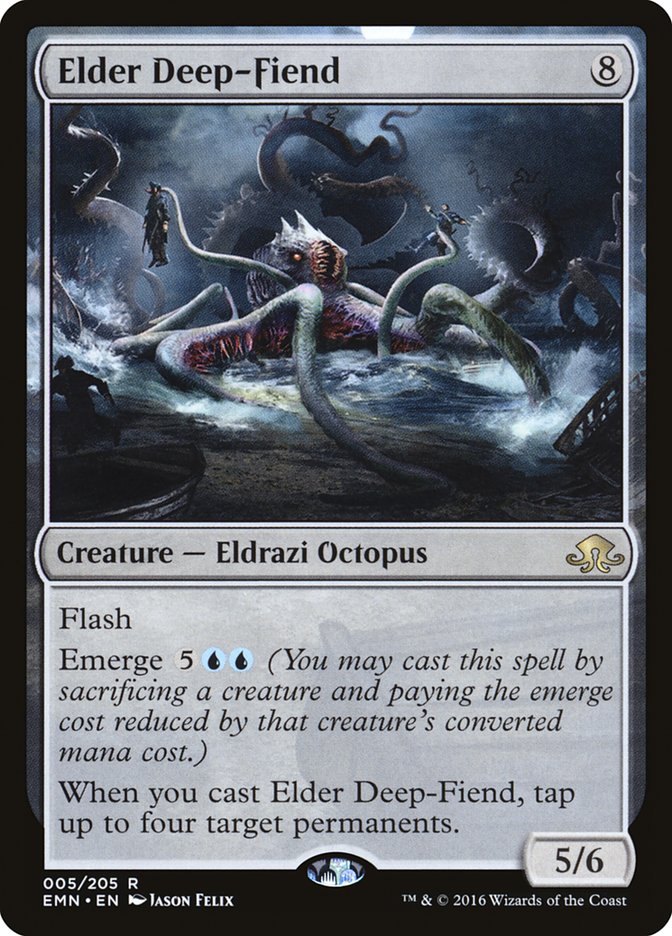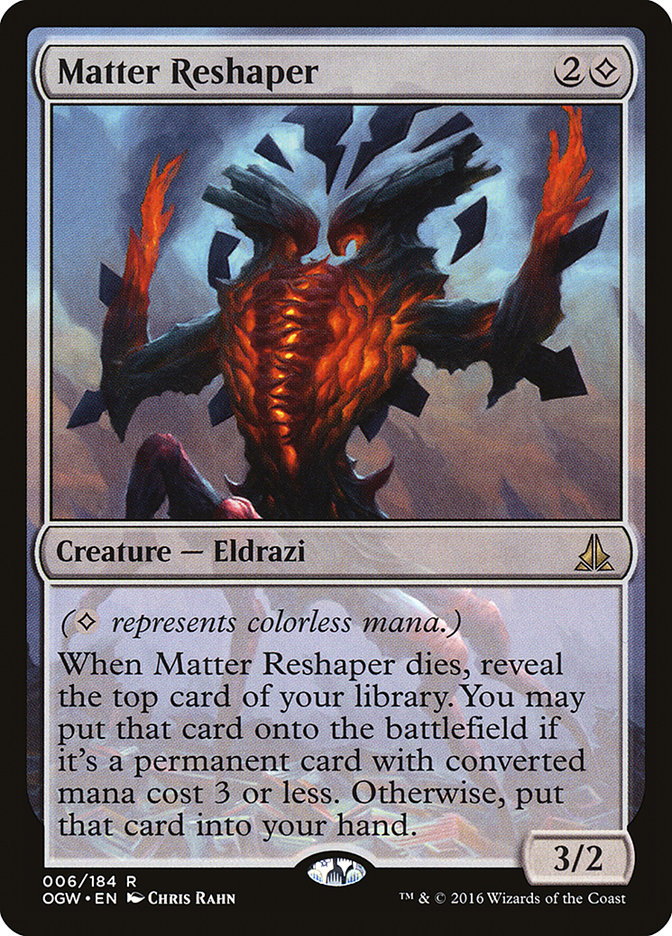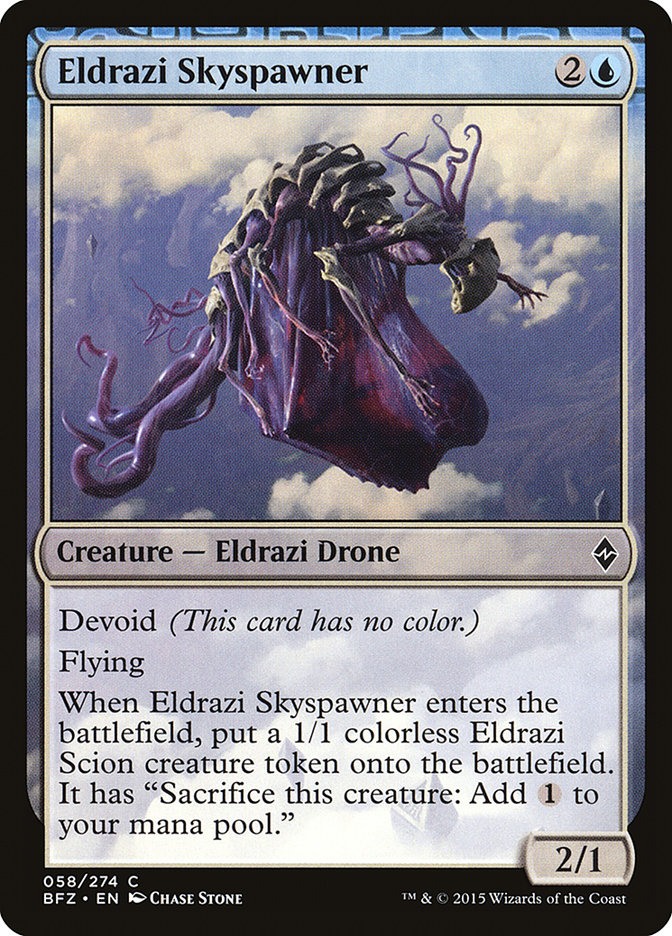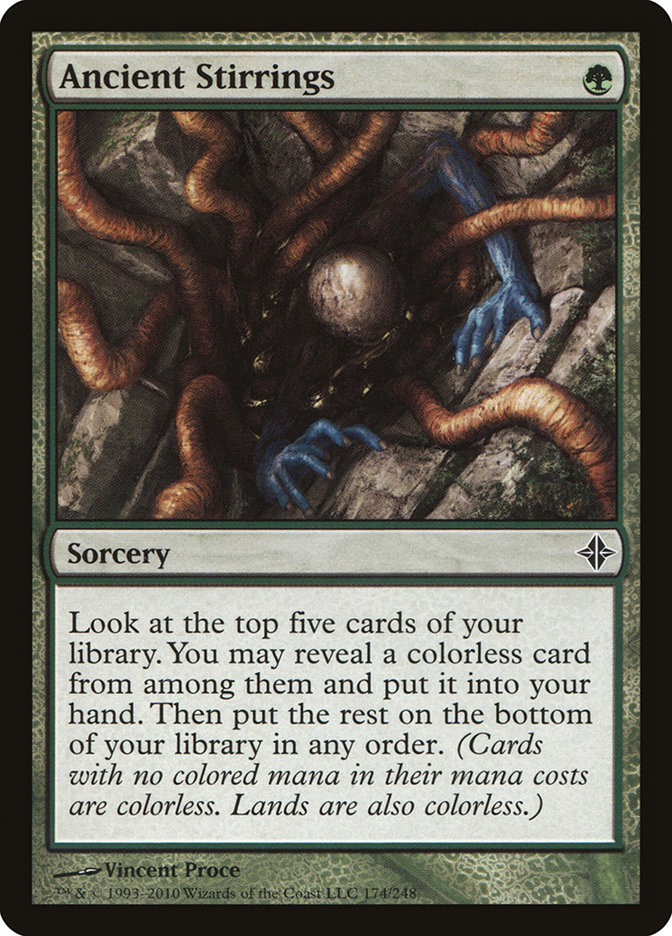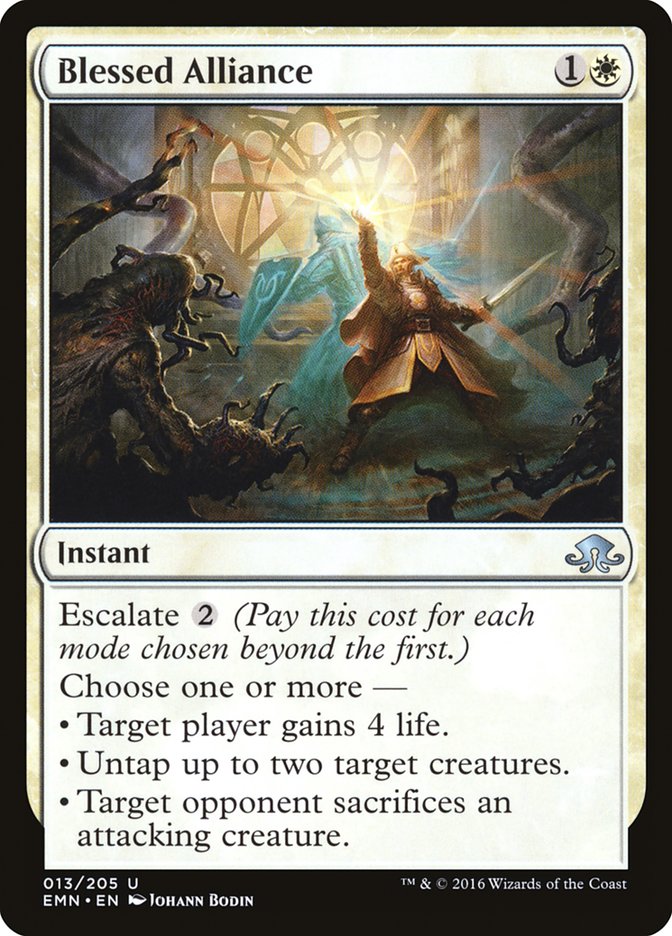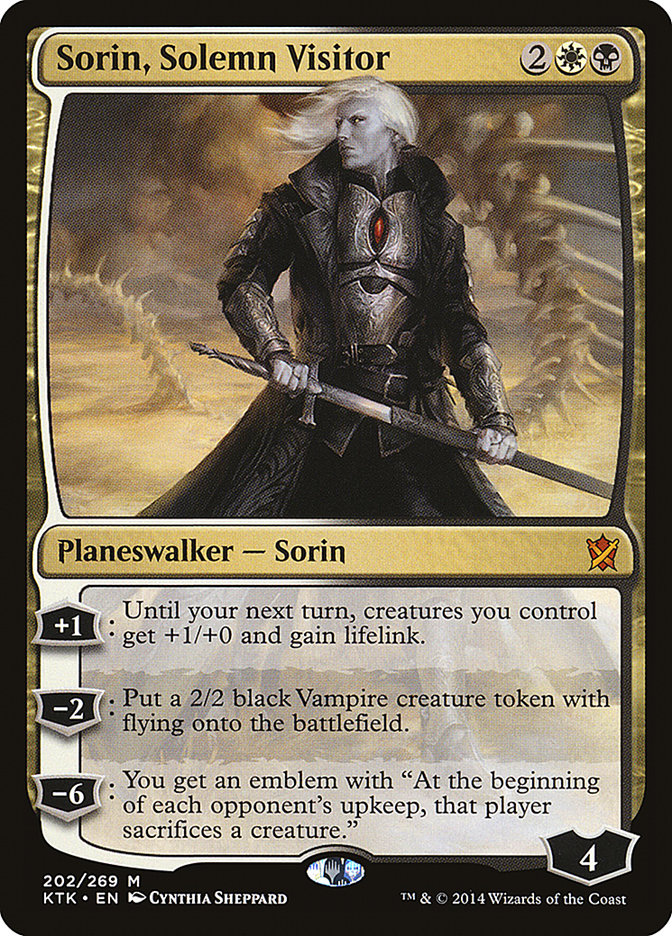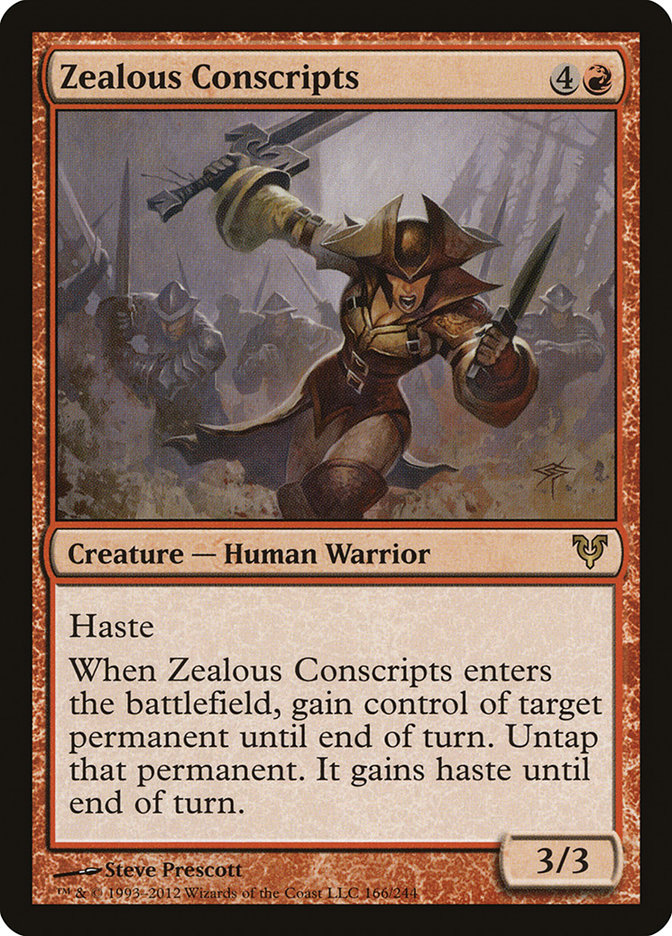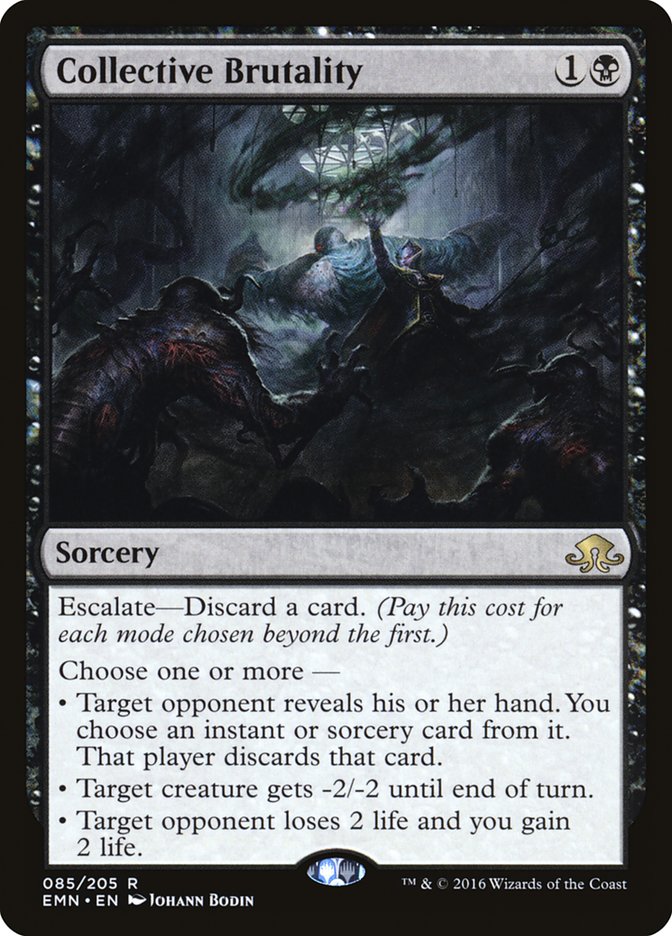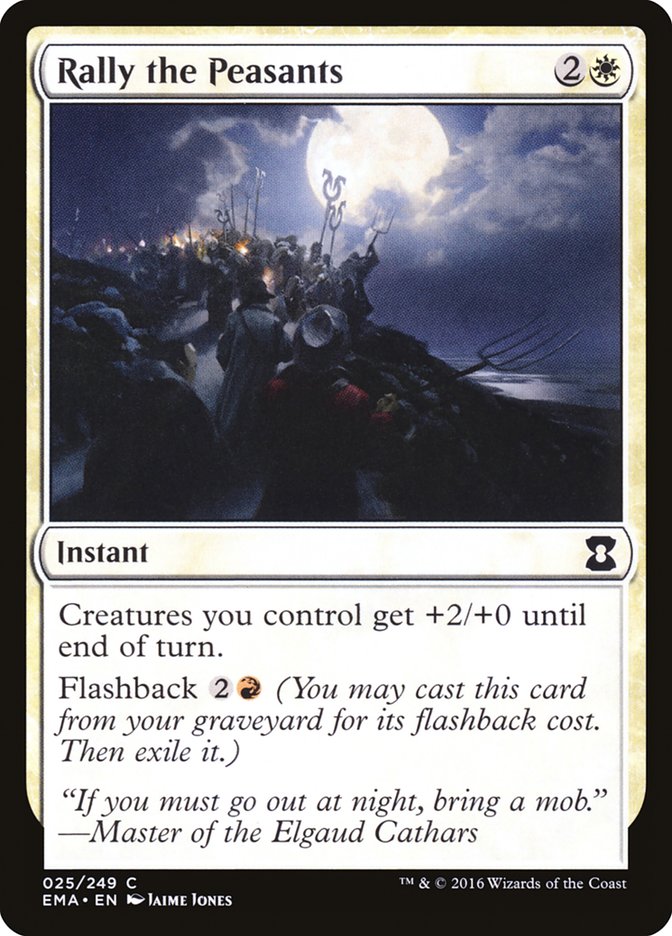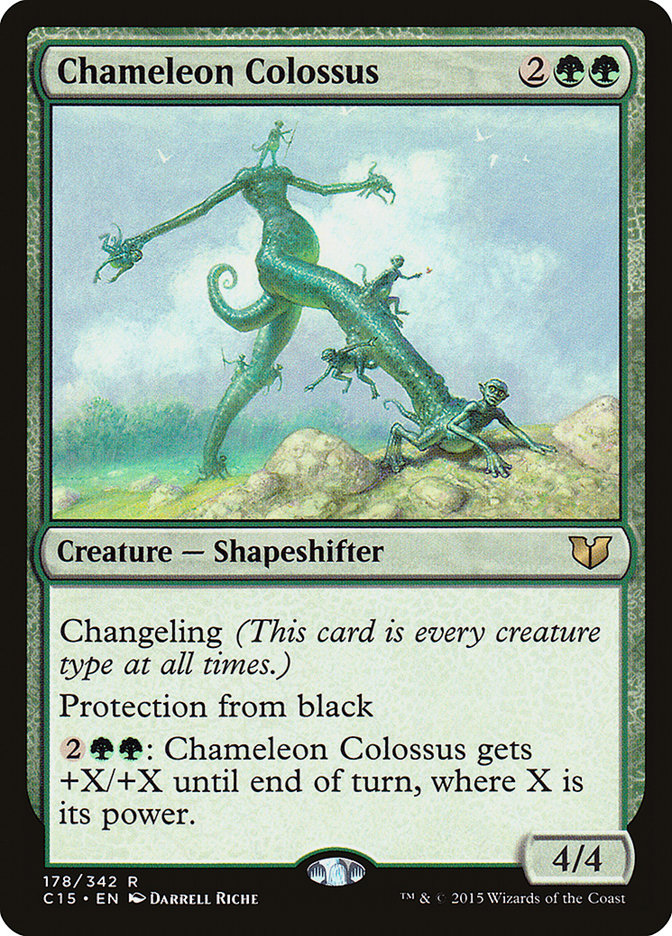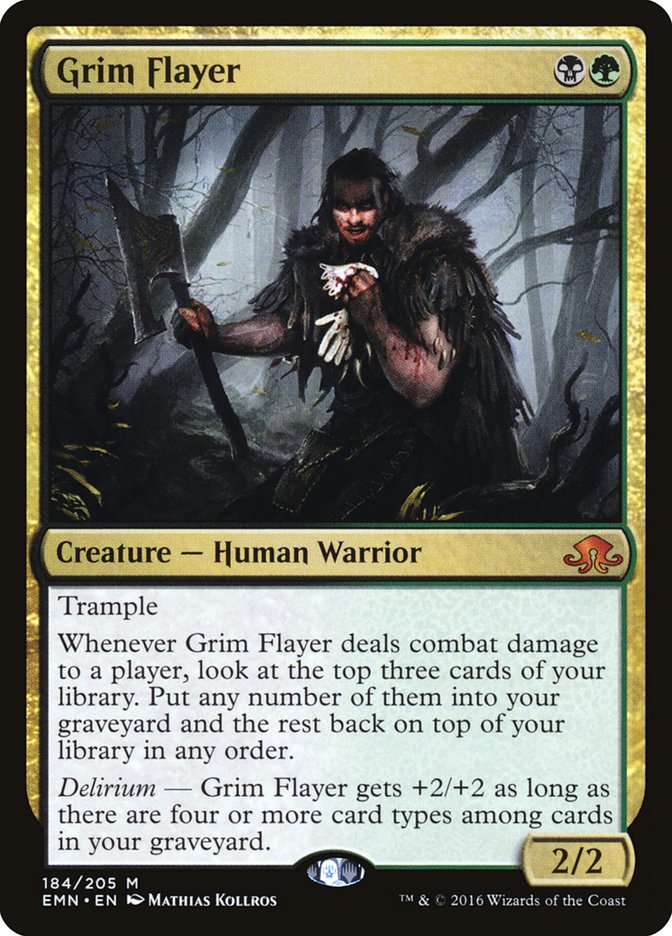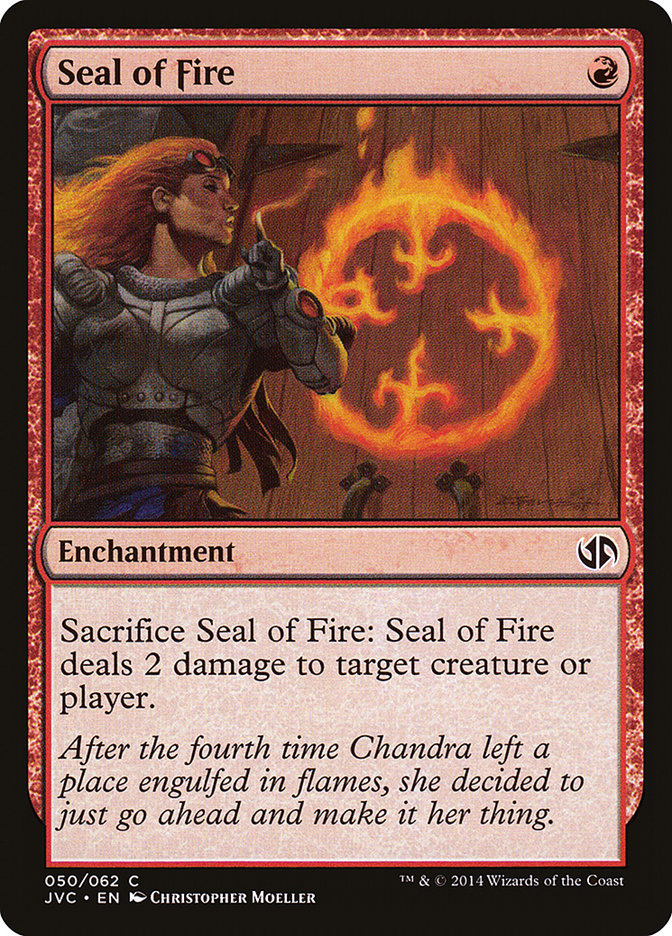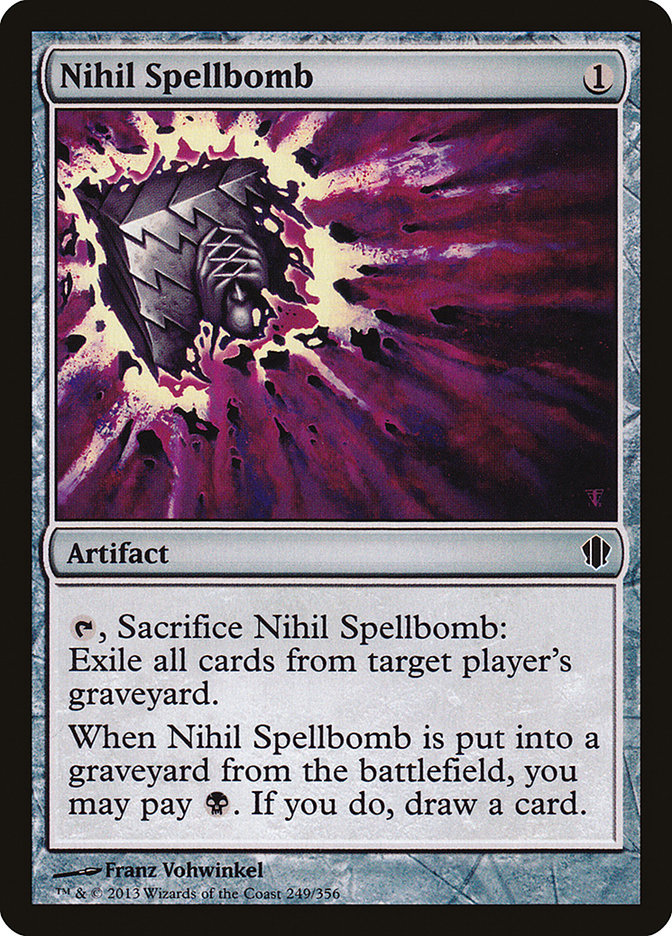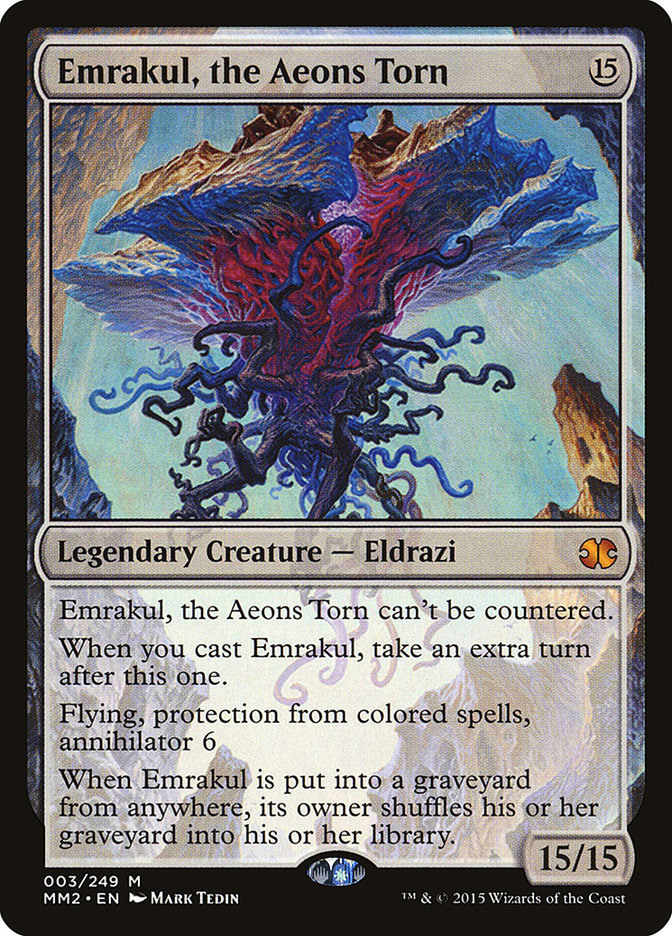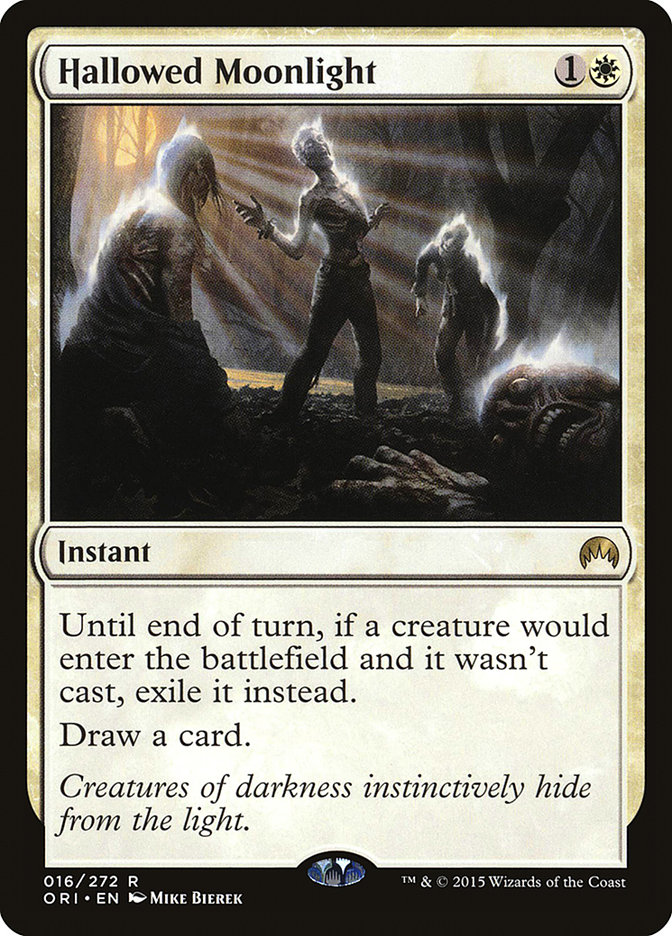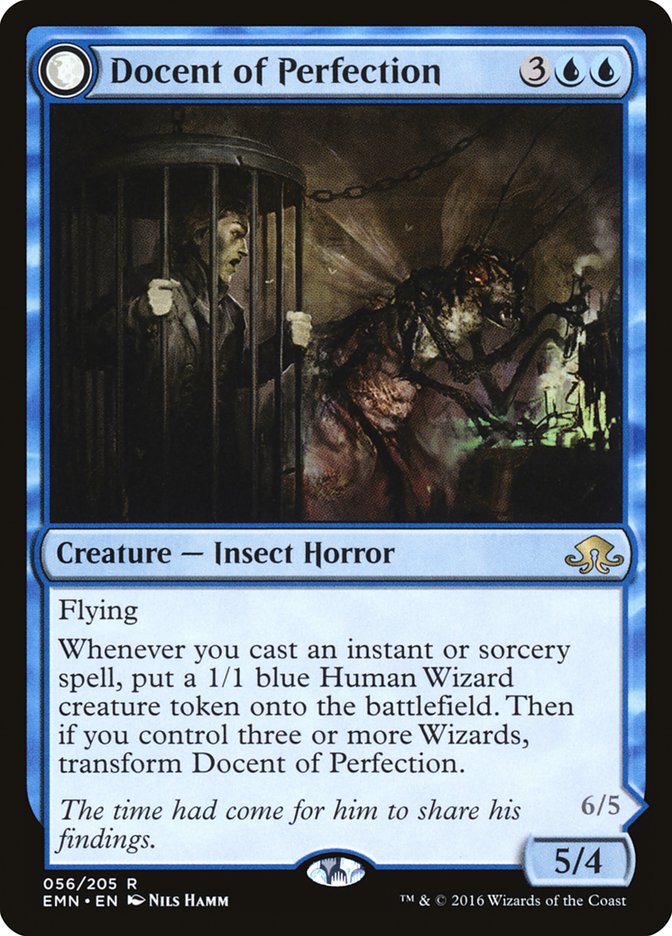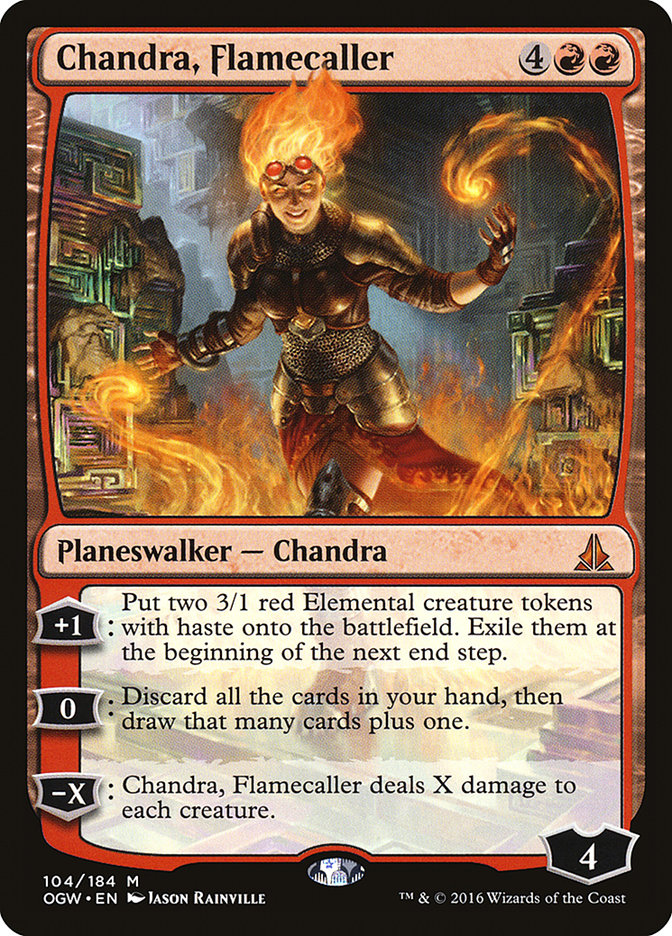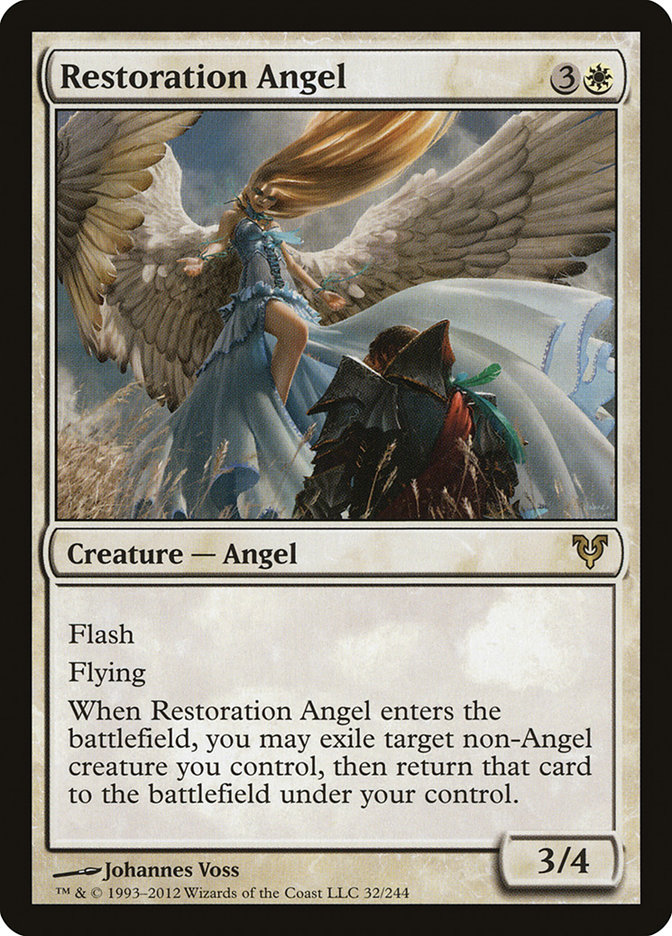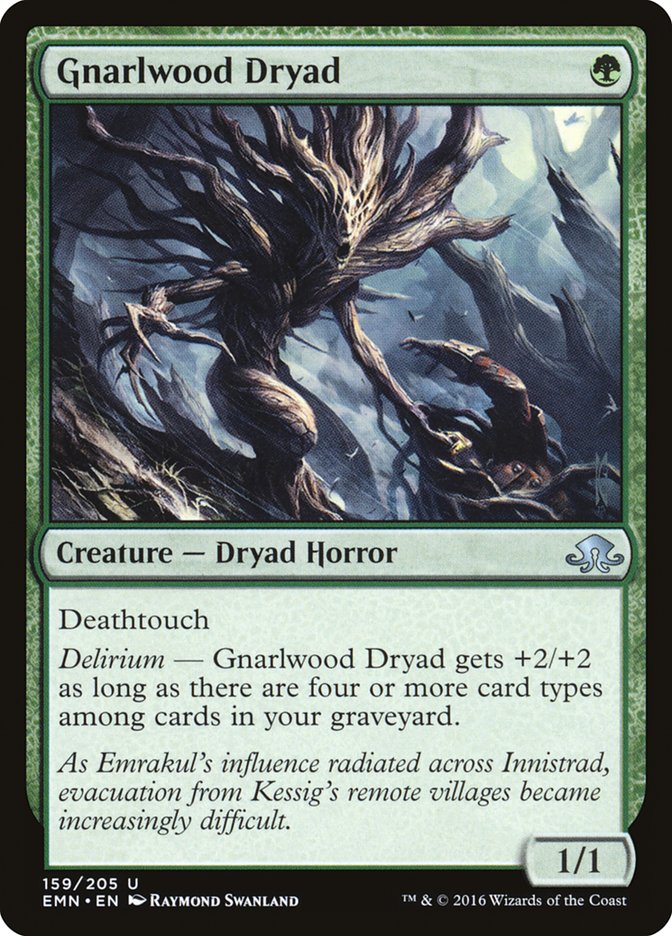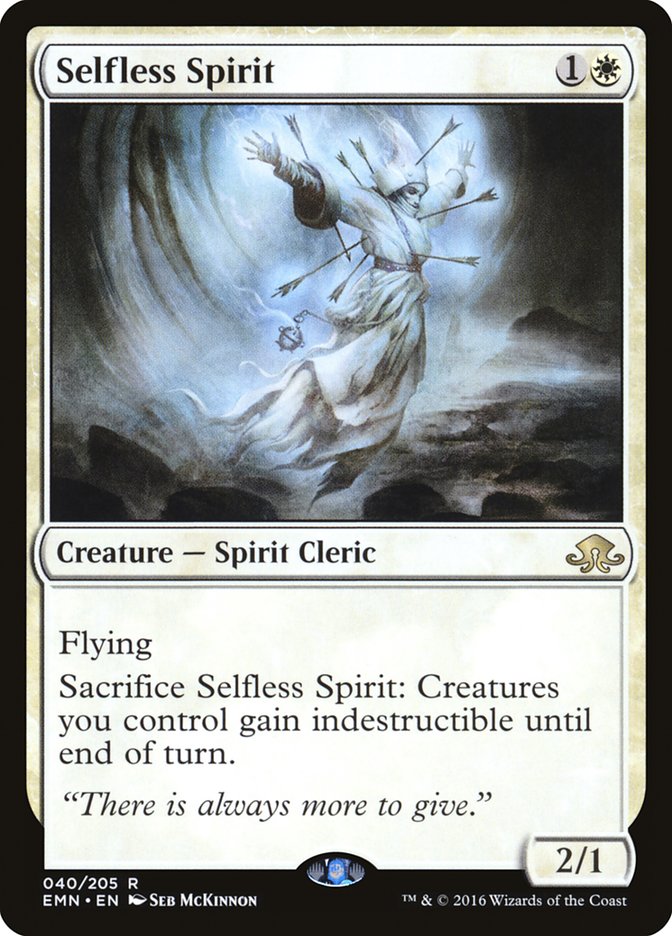Modern is seriously awesome.
Don’t get me wrong. I love the puzzle of attacking a new Standard format, but sometimes it’s nice to play a format that is extremely diverse and wide open. Our current Modern format seems to be that, at least at the moment. What’s interesting to me is that I’ve heard several people claim Modern is extremely broken right now… yet every one of them thinks a different thing is broken.
This weekend’s Invitational in New Jersey was half Modern, and there was a full-on Modern Open this weekend. It would be hard to get much more diverse of a mix of decks as we saw this weekend. When we add the Top 32 metagame of #SCGINVI to the 7-1 or better and Top 8 metagame of the Invitational, we end up with 20 different distinct archetypes (including a good deal of variety within an archetype, like the difference between Abzan Company and Abzan Midrange). Here is that breakdown, weighted by finish:
|
Archetype |
Metagame Percentage |
|
Bant Eldrazi |
13.9% |
|
Affinity |
10.2% |
|
Burn |
8.3% |
|
Infect |
7.4% |
|
Dredge |
6.5% |
|
Jund |
6.5% |
|
Elves |
6.5% |
|
Valakut |
5.6% |
|
Abzan |
4.6% |
|
Death’s Shadow |
4.6% |
|
Mardu |
4.6% |
|
Jeskai |
3.7% |
|
Blue Moon |
2.8% |
|
G/W Hexproof |
2.8% |
|
Naya Company |
2.8% |
|
G/R Tron |
2.8% |
|
B/W Eldrazi |
1.9% |
|
U/W Flash |
1.9% |
|
Kiki Evolution |
1.9% |
|
U/R Delver |
0.9% |
Talk about variety!
Keep in mind, I don’t know if Modern’s busted.
Maybe it is?
If it is, however, no one has proven it, yet. One thing that is clear, though, is that Battle for Zendikar and Oath of the Gatewatch both have a lot to offer the format, even with Eye of Ugin banned. Additionally, Shadows over Innistrad and Eldritch Moon are already having an impact, and I’ve got a feeling we’ve just scratched the surface of these powerful and synergistic sets.
Up first, one of the most volatile decks in the format. What’s the deal with Bant Eldrazi, anyway? Seriously, one week, the deck crushes. The next, it’s nowhere to be seen. Even just this weekend, Bant Eldrazi finished first, fourth, eighth, and thirteenth in the Open, despite not a single copy in the top-table metagame of the Invitational.
Creatures (28)
- 1 Birds of Paradise
- 4 Noble Hierarch
- 2 Spellskite
- 3 Drowner of Hope
- 2 Eldrazi Skyspawner
- 4 Eldrazi Displacer
- 4 Reality Smasher
- 4 Thought-Knot Seer
- 3 Matter Reshaper
- 1 Elder Deep-Fiend
Lands (24)
Spells (8)

Smiley took the Open title with his update to Bant Eldrazi, including a new Eldrazi from Eldritch Moon.
So it begins.
Fresh off a stellar Pro Tour finish, Elder Deep-Fiend is back. Alongside Drowner of Hope, it provides a method to clear a path for the Eldrazi beatdown to power through Tarmogoyfs and the like. While it doesn’t combo with Eldrazi Displacer, it does give us a much-needed mana disruption plan. While tapping creatures is sweet and all, Modern is a dangerous format. Sometimes, people just combo off and win. Elder Deep-Fiend does some serious Mistbind Clique duty, often buying us the extra turn we need to finish someone off.
Matter Reshaper and Eldrazi Skyspawner are perfect sacrifice material, but there are circumstances where we’d be willing to sacrifice just about anything. I’m sure it goes without saying, but Eldrazi Temple does in fact power out emerge, so we’re often getting it at a big discount anyway.
One Elder Deep-Fiend? Without Eye of Ugin?
Yeah, I mean, you could play more and have it be fine. Playing one isn’t crazy, though. We’ve even got Ancient Stirrings to dig to it.
It may not be a full-deck tutor, but Ancient Stirrings does look at a lot of cards, which in turn improves our odds of finding the one Deep-Fiend if we need it. Every time we cast an Ancient Stirrings, it’s like we’re getting five turns’ worth of looks for it.
While he doesn’t run the Elder Deep-Fiend, Ali Aintrazi’s streamlined Top 4 list is not without Eldritch Moon technology.
Creatures (26)
- 1 Birds of Paradise
- 4 Noble Hierarch
- 2 Spellskite
- 3 Drowner of Hope
- 4 Eldrazi Displacer
- 4 Reality Smasher
- 4 Thought-Knot Seer
- 4 Matter Reshaper
Lands (24)
Spells (10)

No stranger to introducing new technology to the world, Ali features Blessed Alliance as a clever new slot-efficient sideboard card in his list.
While Ali’s list has Path to Exile and Dismember in the main, Blessed Alliance has added utility against Emrakul, the Aeons Torn (particularly when summoned by Nahiri or Through the Breach). It’s also a useful lifegain option for when we face the ever-popular deck. Finally, the card’s so versatile, you’re often going to be able to set up fancy (and crazy) plays, like untapping some creatures tapped by Elder Deep-Fiend!
While Bant Eldrazi is far and away the most popular Eldrazi aggro deck, it is not the only one out there. Check out this B/W Eldrazi Aggro deck piloted by Ben Katz to a ninth-place finish in the Open:
Creatures (14)
Planeswalkers (3)
Lands (24)
Spells (19)

At first glance, Ben’s list might seem like a fairly standard collection of Eldrazi aggro cards you’d expect to see in B/W, but he’s actually got some pretty sweet technology.
Frequently there is a glut of good options at four, so it’s interesting to see Sorin showing up here. That said, the card is quite powerful, and the amount of lifegain it provides when lifelinking all of these big bodies is game-winning against Burn.
What? What are these doing here? There isn’t even a single Blood Crypt or Sacred Foundry to search up with Marsh Flats!
The answer, of course, is that Ben plans to cast them with his opponent’s Blood Moon!
Ben’s list is also not without some Eldritch Moon of his own:
Collective Brutality has definitely proven itself one of the biggest cards in the set for Modern, showing up in every single Modern event since it became legal and across many different decks. Here, it gives us a sixth maindeck discard spell and a sixth maindeck removal spell at the same time. It gives us just a little extra reach, and it is even kind of a mondo-combo with Lingering Souls (since we can still flash it back after using it to help escalate the Collective Brutality).
Ben’s list was certainly not the only one to feature the card this weekend. Both Tom Ross in the Invitational and Ross Merriam in the Open packed two copies apiece of the card in their Dredge decks. While the split between main and sideboard fluctuates, the card appears to have become industry standard at this point.
Creatures (27)
- 4 Golgari Grave-Troll
- 4 Stinkweed Imp
- 2 Greater Gargadon
- 4 Narcomoeba
- 4 Bloodghast
- 4 Prized Amalgam
- 4 Insolent Neonate
- 1 Haunted Dead
Lands (20)
Spells (13)

Between Insolent Neonate, Prized Amalgam, Haunted Dead, and Collective Brutality, Shadows over Innistrad and Eldritch Moon have enabled a fresh new take on Dredge that seems to be taking the format by storm. While we discussed this archetype at length last week, there was at least one piece of technology that bears a closer look.
Creatures (27)
- 4 Golgari Grave-Troll
- 4 Stinkweed Imp
- 2 Greater Gargadon
- 4 Narcomoeba
- 4 Bloodghast
- 4 Prized Amalgam
- 4 Insolent Neonate
- 1 Haunted Dead
Lands (19)
Spells (14)

Ross Merriam’s Rally the Peasants makes me smile.
While Ross can hardcast it off his Gemstone Mines and Mana Confluences, the card’s primary purpose is to be played from the graveyard. The more you mill yourself, the more looks you have for it, similar to the Ancient Stirrings into Elder Deep-Fiend situation above. If we find it, suddenly, we can threaten to make our Insolent Neonates, Bloodghasts, Narcomoebas, and Zombie tokens much more threatening. Sometimes the threat alone generates an advantage, forcing opponents to make blocks they otherwise wouldn’t want to make. Then we might not even need to cast it yet.
In addition to the possibility of milling into it, Rally the Peasants is another great card to discard to stuff like Faithless Looting. Obviously we generally prefer to discard a dredger, but sometimes we gotta find one first. Discarding a Rally is like only discarding half a card.
Bant Eldrazi and Dredge have gotten a lot of spotlight recently, but it was Liam Lonergan that took home the trophy, armed with a well-tuned build of Elves:
Creatures (34)
- 4 Llanowar Elves
- 1 Eternal Witness
- 4 Heritage Druid
- 4 Nettle Sentinel
- 3 Elvish Visionary
- 4 Elvish Archdruid
- 3 Ezuri, Renegade Leader
- 1 Spellskite
- 1 Scavenging Ooze
- 4 Elvish Mystic
- 1 Reclamation Sage
- 4 Dwynen's Elite
Lands (18)
Spells (8)

While Liam’s list doesn’t feature Eldritch Moon, I kind of feel like Chameleon Colossus is always fresh tech!
Chameleon Colossus is an Elf, and my God is it a mana sink. Once you start talking about Elvish Archdruid; Nykthos, Shrine to Nyx; and Nettle Sentinel plus Heritage Druid, you’re starting to get into large enough stats for Chameleon Colossus that I hope you’re practiced in doubling fives, sixes, and sevens. Doubling fours is no problem, as we’ve seen the math so many times. How many times have you ever really doubled seven? Tribal lords change the equation…
It’s not that we can’t do it on the scratch paper we’ve got available to us. Rather, it’s that we need to be able to do it quickly, and we don’t always want our opponent to know we’re doing the math about whether we can kill our opponent next turn if we play this Chameleon Colossus.
It has protection from black.
Yeah, yeah, I know. Look, I get it. Sometimes you want a threat that doesn’t die to Terminate, Abrupt Decay, or any of that stuff. And sure enough, Liam defeated a Jund deck in the finals, piloted by Jadine Klomparens.
Creatures (14)
Planeswalkers (4)
Lands (24)
Spells (18)

Jadine’s list is almost a “previous level Jund” sort of approach, passing on Grim Flayer, Traverse the Ulvenwald, and Liliana, the Last Hope. Instead, she’s just playing a great mix of classic Jund cards with absolutely zero funk, zero spice. This is the sort of Jund deck the Terminator would play.
Of course, that said, I still like Grim Flayer.
Grim Flayer is a little bit Tarmogoyf, a little bit Dark Confidant. It contributes a lot of stats for little mana while also helping us put the game on lock by ripping through our deck and finding a good mix of action to ensure that we’ll still be in control of the game if the Grim Flayer dies.
For a great example of a Grim Flayer Jund list, let’s look at Andrew Tenjum’s list from the Open:
Creatures (13)
Planeswalkers (4)
Lands (24)
Spells (19)

There are more good two-drops than we’ve got room for, but Tenjum’s split makes a lot of sense, playing three Dark Confidants and three Grim Flayers. After all, they each provide diminishing returns to some degree. Yes, Grim Flayers can feed into each other, but the second attack trigger is much weaker than the first. Besides, I’d usually rather draw one of each than two of one in his list.
I appreciate the Seal of Fire has a minor nod to Grim Flayer without going overboard. It powers up our Tarmogoyfs, and I think the card is just underrated to begin with. It’s nice to be able to put it down and then threaten to do it without needing mana up. It’s also nice to be able to put it down and then plus Liliana without losing it.
The sideboard Disfigure is a little amusing, but sometimes you just get sick of Kor Firewalker! Similarly, Collective Brutality shows up yet again.
Liliana is a tough name for a planeswalker to have in Modern. That said, I love the use of Liliana, the Last Hope here. There are a lot of Modern decks full of one-toughness creatures. Signal Pest, Blighted Agent, Dark Confidant, Heritage Druid, Snapcaster Mage, the list goes on and on.
Okay, you lost me on this one.
…
Jund wasn’t the only place Grim Flayer made an appearance this weekend. Check out Michael Majors’s update to Abzan Midrange that he took to a Top 8 finish in the Invitational:
Creatures (12)
Planeswalkers (3)
Lands (24)
Spells (21)

Majors’s take on Abzan is very similar to a Jund deck with some really smart number choices. In particular, I like the use of just two Siege Rhinos.
I think people get too enchanted by the reputation of this card. It’s a great card, of course. This is Modern, though. There are a lot of great cards. You don’t necessarily want all that many four-drops in your deck. It’s not like drawing just one Siege Rhino is bad.
That’s right, two Nihil Spellbombs maindeck. This is a man who knows his meta.
I also appreciate Majors’s discipline when it comes to three-cost cards. Frequently, Abzan players can’t help themselves. Lingering Souls, Lilianas, Finks, Fulminator Mages, Maelstrom Pulses…there are so many good options, it can be very tempting to overload the three-spot on the curve. Majors keeps his list to just eight, and his lower curve combined with two maindeck Nihil Spellbombs lets him get by on just 24 land instead of 25 or 26.
Gideon is a great option for Abzan sideboards, giving us a durable threat that doesn’t die to Supreme Verdict or Terminate. It’s also a mondo combo with Lingering Souls when we drop it and Emblem for a bunch of surprise extra damage.
Of course, there’s another appearance by Collective Brutality (which also combos with Lingering Souls). Actually, speaking of Lingering Souls, Evan Whitehouse makes really great use of the card in his innovative Mardu Control deck:
Creatures (5)
Planeswalkers (8)
Lands (25)
Spells (22)

This list is like a Jeskai Harbinger deck, but it trades permission for discard, cantrips for Liliana of the Veil, and Snapcaster Mage for Dark Confidant.
Playing an entire tournament knowing most every Dark Confidant activation could be certain death? That’s badass.
Hey, sometimes you just wanna feel something.
I can appreciate that.
One of the really cool parts about Evan’s list is the use of four Lilianas, four Inquisitions, and two Thoughtseizes to heavily disrupt opponents’ hands. You don’t need an opponent to be unable to stop you for long for Nahiri to win the game for you. I also like that Nahiri gives you something to do with your extra discard spells later, when everyone is in topdeck mode. Finally, Nahiri is a natural combo with Lingering Souls.
Dredge is the real deal and people that have gone to greater lengths to sideboard against it have been rewarded.
Evan’s Mardu deck was more successful than any of the Jeskai decks; however, blue decks have not vanished or anything. Benjamin Nikolich Top 8ed the Open with a really cool new take on Blue Moon:
Creatures (7)
Planeswalkers (2)
Lands (23)
Spells (28)

Ben’s list uses two copies of Docent of Perfection in order to completely take over a game as well as win in a hurry when needed.
Docent of Perfection works great with stuff like Serum Visions, of course, but you really don’t need to trigger it all that many times before you completely overwhelm most battlefields. It’s also important to note that it flips based on any Wizards, not just its own. Yay, Snapcaster Mage!
Sweet! Chandra isn’t even doing anything fancy. She’s just a powerful card that can take over a game, win through Blood Moon, not die to traditional removal, and give us a whole new class of options.
For a very different style of blue deck, we’ve got Jonathan Alvarado’s U/W Flash deck:
Creatures (17)
Lands (25)
Spells (18)

To the surprise of no one, Spell Queller is starting to show up in Modern.
It makes sense, as cards that care about low costs are disproportionately good in formats with disproportionately low costs (Abrupt Decay, Inquisition of Kozilek, Mental Misstep).
Okay, that’s just too much fun with Spell Queller. Yeah, blinking the Queller gives them the spell, but you control the timing (and upgrading what’s blinked can be great).
Creatures (19)
Lands (17)
Spells (24)

Brad’s list doesn’t contain any Eldritch Moon, but I can’t help but wonder if Gnarlwood Dryad is worth trying here. We’ve even got Mutagenic Growth, Gitaxian Probe, and Mishra’s Bauble, along with our fetchlands, regularly triggering delirium by turn 2.
While Gnarlwood Dryad hasn’t had all that much Modern impact yet, Eldritch Evolution put up a good finish in the hands of Jacob Baugh, using it to find Kiki-Jiki, Mirror Breaker early and often.
Creatures (28)
- 4 Birds of Paradise
- 1 Kiki-Jiki, Mirror Breaker
- 2 Eternal Witness
- 1 Orzhov Pontiff
- 1 Reveillark
- 1 Kitchen Finks
- 1 Noble Hierarch
- 1 Qasali Pridemage
- 3 Wall of Omens
- 1 Spellskite
- 1 Scavenging Ooze
- 2 Restoration Angel
- 4 Voice of Resurgence
- 1 Anafenza, the Foremost
- 1 Siege Rhino
- 2 Pia and Kiran Nalaar
- 1 Selfless Spirit
Lands (23)
Spells (9)

The evolution of Kiki-Pod (sans Pod) continues, with Eldritch Evolution taking a little pressure off our manabase as well as feeding right into the Chord of Calling setup we’ve been using. Eldritch Evolution lets us turn a Wall of Roots into a Restoration Angel for just two additional mana or turn an Eternal Witness into a Kiki-Jiki for three, which can lead to comboing off out of nowhere very easily, and a lot of the familiar pacing people may know from previous Kiki-Chord decks no longer holds true.
Selfless Spirit helps against sweepers, as always. It’s also a layer of insurance to not only help force through our combo but also protect our lock components when we’re relying on disruptive creatures like Kataki, War’s Wage; Linvala, Keeper of Silence; or Melira, Sylvok Outcast.
Twenty different archetypes? A dynamic and evolving metagame with lots of new cards, lots of new tech printed long ago, and lots of different types of gameplans? Modern seems to be a fun game in pretty good shape.
Maybe we should break it.


